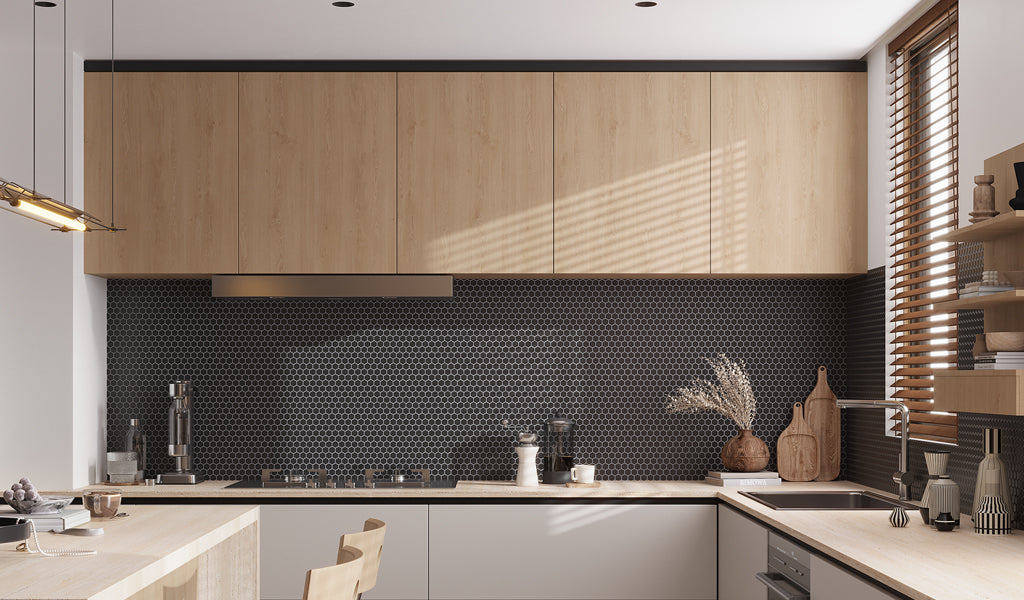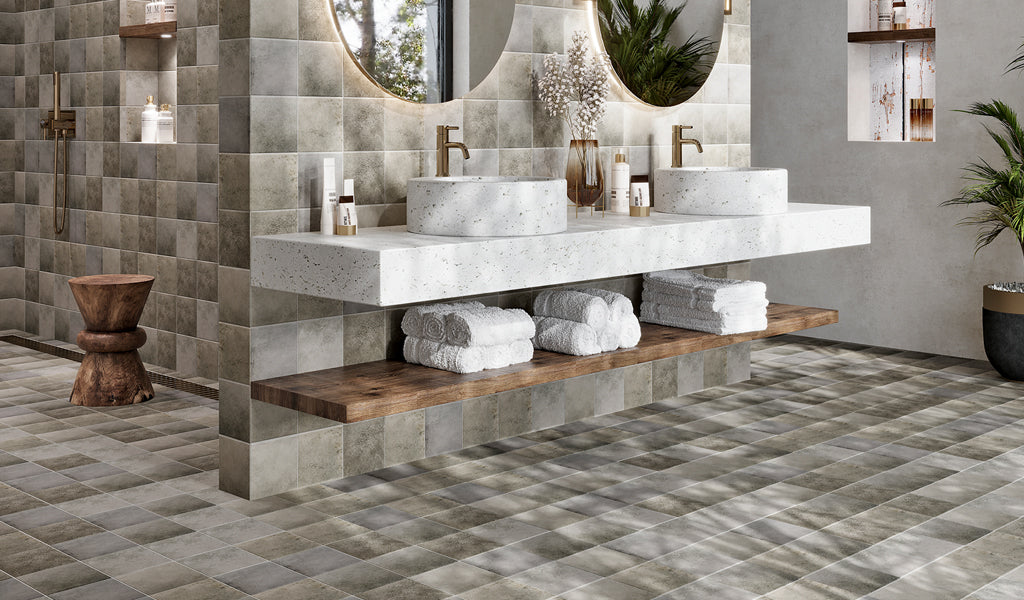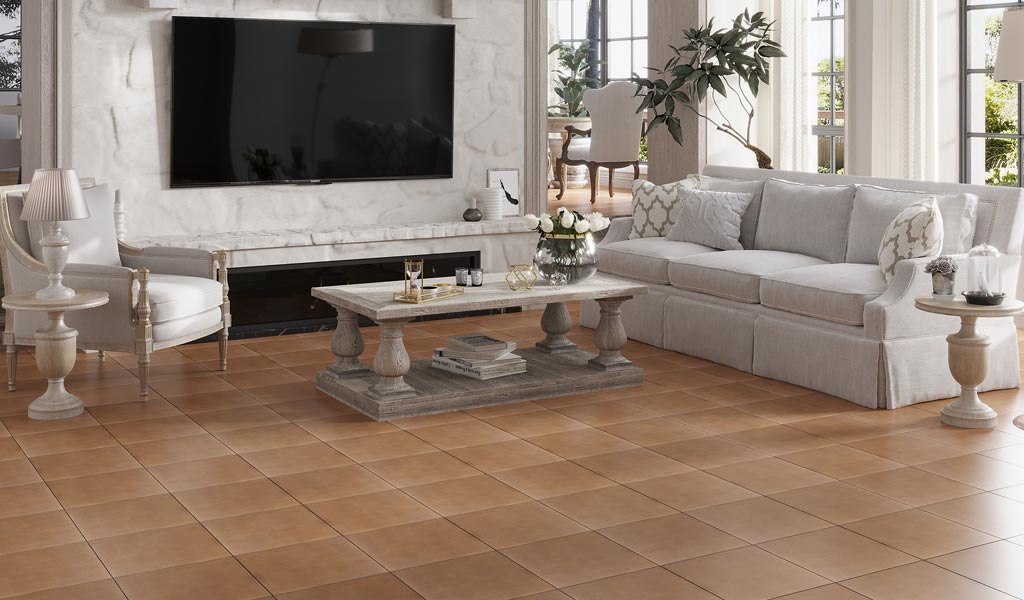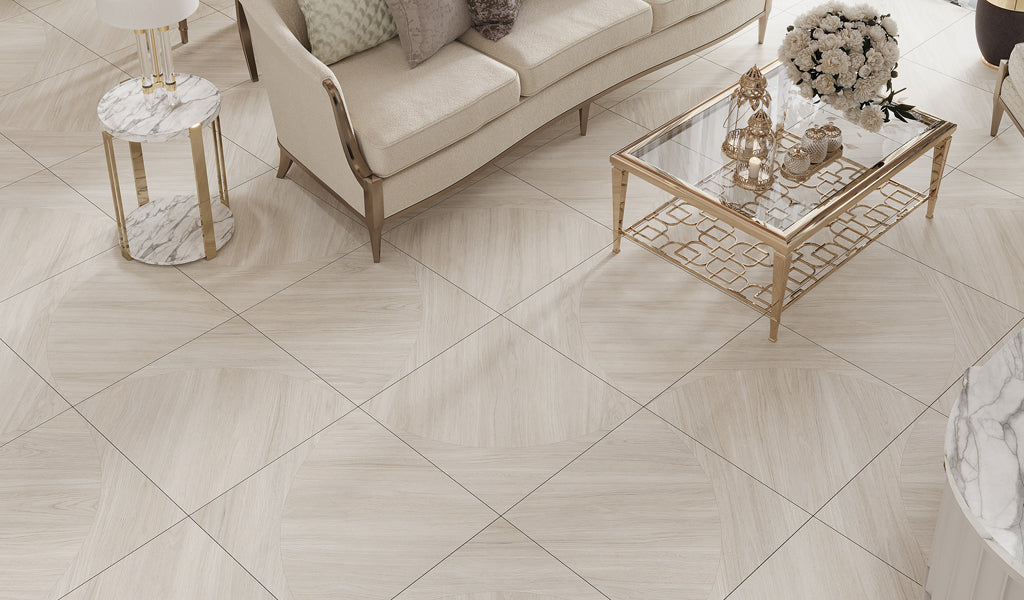How to Choose the Best Tile Cutter & Tools: A Complete Guide
Sep 05, 2025
The right tool for the tiling project can give you the desired results for your home improvement project. There are various tools available in the market for different tile materials. An improper tool will provide a poor finish and an unprofessional look. Therefore, you must select the right tile cutter tool for your tiling project and avoid excess waste. Whether you’re working with ceramic, porcelain, or stone tile, the proper tool can truly make a difference.
This tile cutter guide will cover the required tools for simple or complex tile installation projects. We’ll also talk about the different types of cutters and how to use a tile cutter.
What are the different types of Tile Cutters and Tools?
There are various types of tile cutters available, which are designed for various types of materials, to meet the tile cutting needs.
1. Manual Tile Cutters
Are you planning to make straight cuts in your small or medium-sized tiling project? Do you wish to cut ceramic or porcelain tiles easily and economically? There you go. A manual tile cutter is ideal for all such requirements. Built with a sturdy steel frame and a tungsten carbide cutting wheel, it scores the tile surface and then snaps it cleanly with applied pressure. This simple score-and-snap method makes the manual tile cutter a favorite tool for DIY renovators and professionals.
For curved shapes, very thick porcelain, or natural stone, you may want to use a wet saw to achieve the same clean, professional results. The major advantage of using manual tile cutters is that they are less expensive, create no mess, and take up less space for storage.
2. Electric Tile Cutters
When your tile material is hard or when you handle larger installation projects, no worries, you can very well use an electric tile cutter, the best choice for such requirements. They are powerful and designed for thick and bulky materials like stone and granite. With this tile cutter, you can cut the tile into various shapes. They can be used for larger commercial and residential projects.
Beyond handling harder materials, electric tile cutters also shine in their versatility. They allow you to go beyond straight cuts, making precise mitre edges, “L” or “U” shapes for corners and recesses, and even grooves or vertical cuts when needed. Most models feature water-cooled diamond blades, ensuring smoother, chip-free results that closely match the precision of factory finishes. This combination of quality and flexibility makes them a go-to tool for both professionals and serious DIY renovators.
3. Wet saw with a Diamond Blade
One type of electric tile cutter is a wet saw with a diamond blade. A wet saw is a robust tool for cutting tiles, specifically designed for larger projects or when working with materials like natural stone, granite, and thick porcelain. Wet saws use water to cool and lubricate the diamond blade, which not only boosts cutting performance but also makes the process safer and cleaner. Water acts as a coolant to prevent the blade from overheating and warping, while also reducing friction so the blade moves smoothly through hard materials like porcelain or stone. It binds with dust particles, suppressing harmful silica dust from becoming airborne, and minimizes flying debris for a safer work environment.
By keeping the blade cool and well-lubricated, water ensures cleaner, chip-free cuts, extends the blade’s lifespan, and saves on replacement costs. Although dry-cutting blades exist for situations where water cannot be used, wet cutting is generally the preferred method for achieving precision, safety, and long-lasting blade performance.
4. Glass Tile Cutters
The glass tile cutters work on the same principle of snap and score as a manual tile cutter, but are customized for the delicate nature of glass tile. It has a cutting wheel designed to score an accurate or precise line on the glass surface. After scoring, a pair of special pilers, also called tile nippers, is used. They apply pressure and snap the tile along the scored line. This procedure is ideal for smaller projects and for performing more delicate, irregular cuts. Want to learn how to cut glass tiles with precision and ease? Read our beginner-friendly, step-by-step guide!
5. Diamond Wheel Cutter
The diamond-wheeled tile cutters are mostly for professionals. They are a little expensive, and directing their utilization requires substantial practice. The cutters need constant two-handed pressure for obtaining successful cuts, which can be quite demanding for normal DIYers. If you’re exploring simple ways to get started, check out our guide on using ceramic tile cutters for an easy, beginner-friendly approach.
6. Other Option:
The tile cutting machine category also includes power tools, such as an angle grinder. You can cut tile with an angle grinder using a diamond blade for managing hard and complex cuts. This needs a steady hand and proper safety precautions. Another example of this category is tile saws, which are powerful tools that help make quick work of large quantities of tile.
| Tile Material | Recommended Tile Cutters |
|---|---|
| Ceramic | Use Manual Tile Cutter, Wet Saw, Tile Nipper |
| Porcelain | Use a Wet Saw with a Diamond Blade, Heavy-Duty Manual Cutter |
| Natural Stone ( Marble, Granite, Slate) | Apply Wet Saw with a Diamond Blade, Angle Grinder |
| Glass Tile | Apply Glass Tile Cutter, Wet Saw with a Fine-Grit Diamond Blade, Tile Nipper |
| Mosaic | Use Tile Nipper, Wet Saw |
Choosing the Right Tile Cutter Size & Cutting Thickness:

Your cutter should be appropriately sized for the tiles you want to cut. Check the cutter's cutting length to verify that it is longer than the diagonal measurements of the largest tile you will use. This will enable you to make clean cuts. Cutting thickness is important too. Make sure that the cutter can handle the thickness of your tiles without pressing the blade or snapping the mechanism.
Push vs. Pull Tile Cutters: Pros and Cons:
There are two types of tile cutters: Push and pull cutters. Both are designed for different projects. Understanding the meaning, pros, and cons will help you select the right tile cutting tool for your projects.
1. Push Tile Cutters:
These tools, which are also called score-and-snap cutters, score the tile and then snap it cleanly along the scored line. They are the most reliable choice for making accurate cuts and are best used for ceramic and porcelain tiles.
Pros of Pull Tile cutters
-
-
The pulling motion is more natural and results in less strain, allowing the user to comfortably use the tool for longer periods.
-
The lever-design handle provides precise control over cutting pressure. This feature is useful for tiles with rough or irregular textures or hard surfaces.
-
You can score and snap in one smooth motion without resting the handle to change position. This allows you to be much quicker with your workflow.
-
The handle makes cutting larger tiles easier in a flawless, required motion-no uneasy variations are needed.
-
Cons
-
-
The measuring square is a little away from the tilers.
-
Top Features to Look for in a Tile Cutter
-
Heavy-Duty Frame:
A solid, heavy-duty frame minimizes flexing of the cutter while in use, helping you achieve straighter, more accurate cuts.
-
Adjustable Angle Guide:
It is ideal for precise diagonal and miter cuts. It makes it easy to cut complex tile patterns.
-
Laser Guide:
Some models have built-in laser projects, making it easier to see where the blade will cut for higher precision.
-
Ergonomic Handle:
A comfortable, non-slip material grip that reduces hand pressure and helps to stay in control for a lengthy cutting cycle.
-
High-Quality Scoring Wheel:
For manual cutters, it is best to select a wheel manufactured with tough materials like tungsten carbide or titanium to provide flawless scoring and longevity.
Must-Have Tile Cutter Accessories for Better Results
The right accessories can help you get cleaner cuts and make your job easier. Here are some accessories worth having:
-
Extra Scoring Wheels:
A few extra scoring wheels-sharp and high-quality, help clean scoring and prevent chipping.
-
Tile Nippers:
Ideal for trimming small sections or shaping tiles around irregular spaces that a cutter can’t fit into.
-
Measuring devices:
A brand-new tape measure, an angle finder, or a combination square can help you mark accurate cutoff lines every time.
-
Personal Safety Equipment:
Safety glasses and gloves are a must to protect your eyes from debris and your hands from sharp corners.
-
Lubricant for the cutting wheel:
Oil can keep the scoring wheel running smoothly and extend its life.
-
Tile spacers:
It is needed for consistent grout lines after you lay the tiles.
These accessories in your tool bag or kit will help you complete the task faster with a professional look.
When to Consult a Pro Instead of DIY
Most tiling tasks are DIYers' jobs, but some need a professional touch.
-
Larger or More Complex Projects:
A tiling project like an entire floor or a large shower stall requires proper time, commitment, specialized tools, and expertise.
-
Tricky Materials:
If you’re installing delicate or costly materials like custom mosaic or large-format tiles, it is better to hire a professional tile installer to avoid extra costs.
-
Challenging Cuts:
Miter cuts for backsplash, complex patterns, or cuts around many fixtures are quite difficult and need a pro’s touch.
Frequently Asked Questions:
1. What are the common mistakes when using a tile cutter?
Common mistakes include not pressing hard enough when scoring with a manual cutter, not using enough water with a wet saw (which can cause chips), and forgetting to measure twice before cutting.
2. How do you ensure even tile spacing?
Tile spacers are the ideal solution. It provides spacing between the tiles so that your grout lines look well-aligned.
3. What is the most difficult tile to cut?
Porcelain tile is the hardest to cut. Its density and hardness make it hard to work with and prone to chipping if incorrect tools are used. Larger sizes can be more challenging, so sometimes it’s worth the cost to hire a professional.
4. Are all tile cutters the same?
Not even close. Each tile cutters are made for different purposes, some cut straight and others can make curves. Each type deals with various materials better.
5. Do I need different tile cutters for wall and floor tiles?
Most manual cutters will accommodate both wall and floor tiles, but it just depends on the thickness and the material. Some thicker and harder floor tiles need stronger manual cutters or a wet saw.
6. Do you leave a gap between tile and trim?
The gap between tile and trim can trap dirt. This makes cleaning torment and looks unprofessional. Understanding the required spacing is crucial for a professional finish. A snug fit is the best option-it prevents dirt collection, makes cleaning easy, and offers better protection for your tiles.
7. How to cut tile with a wet saw without chipping?
Go slow with a sharp blade. Controlling your cutting speed is important for a precise cut. With experience, you’ll learn to notice when it’s time to change the blade for the best results.
8. What do professional tilers use to cut tiles?
It depends on the material, project complexity, and precision required. Professional tilers might use manual score-and-snap cutters, wet saws, angle grinders, and other peculiar tools. Sometimes, they will use a mixture of both tools to achieve the desired look.











